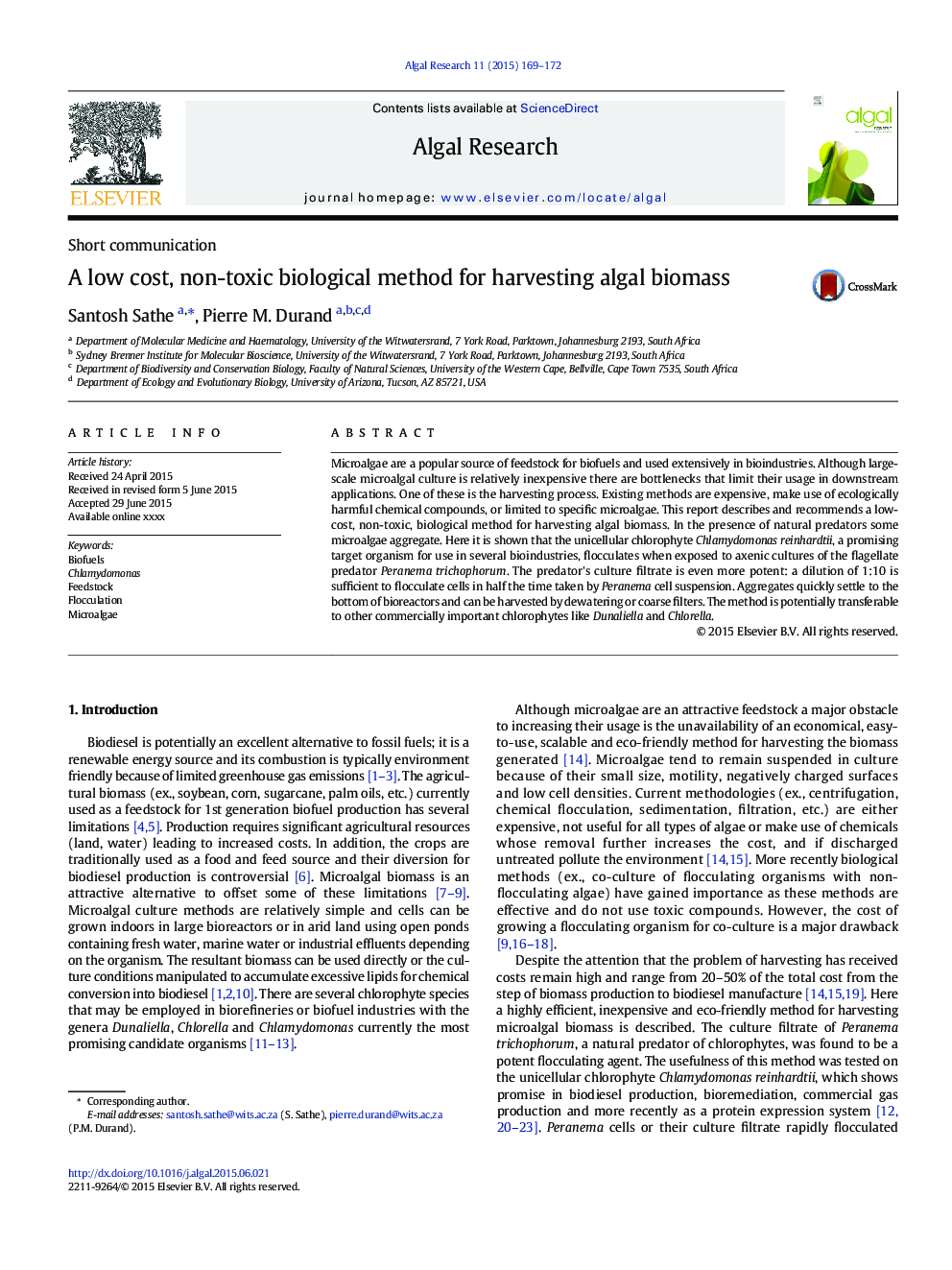| Article ID | Journal | Published Year | Pages | File Type |
|---|---|---|---|---|
| 8088110 | Algal Research | 2015 | 4 Pages |
Abstract
Microalgae are a popular source of feedstock for biofuels and used extensively in bioindustries. Although large-scale microalgal culture is relatively inexpensive there are bottlenecks that limit their usage in downstream applications. One of these is the harvesting process. Existing methods are expensive, make use of ecologically harmful chemical compounds, or limited to specific microalgae. This report describes and recommends a low-cost, non-toxic, biological method for harvesting algal biomass. In the presence of natural predators some microalgae aggregate. Here it is shown that the unicellular chlorophyte Chlamydomonas reinhardtii, a promising target organism for use in several bioindustries, flocculates when exposed to axenic cultures of the flagellate predator Peranema trichophorum. The predator's culture filtrate is even more potent: a dilution of 1:10 is sufficient to flocculate cells in half the time taken by Peranema cell suspension. Aggregates quickly settle to the bottom of bioreactors and can be harvested by dewatering or coarse filters. The method is potentially transferable to other commercially important chlorophytes like Dunaliella and Chlorella.
Related Topics
Physical Sciences and Engineering
Energy
Renewable Energy, Sustainability and the Environment
Authors
Santosh Sathe, Pierre M. Durand,
